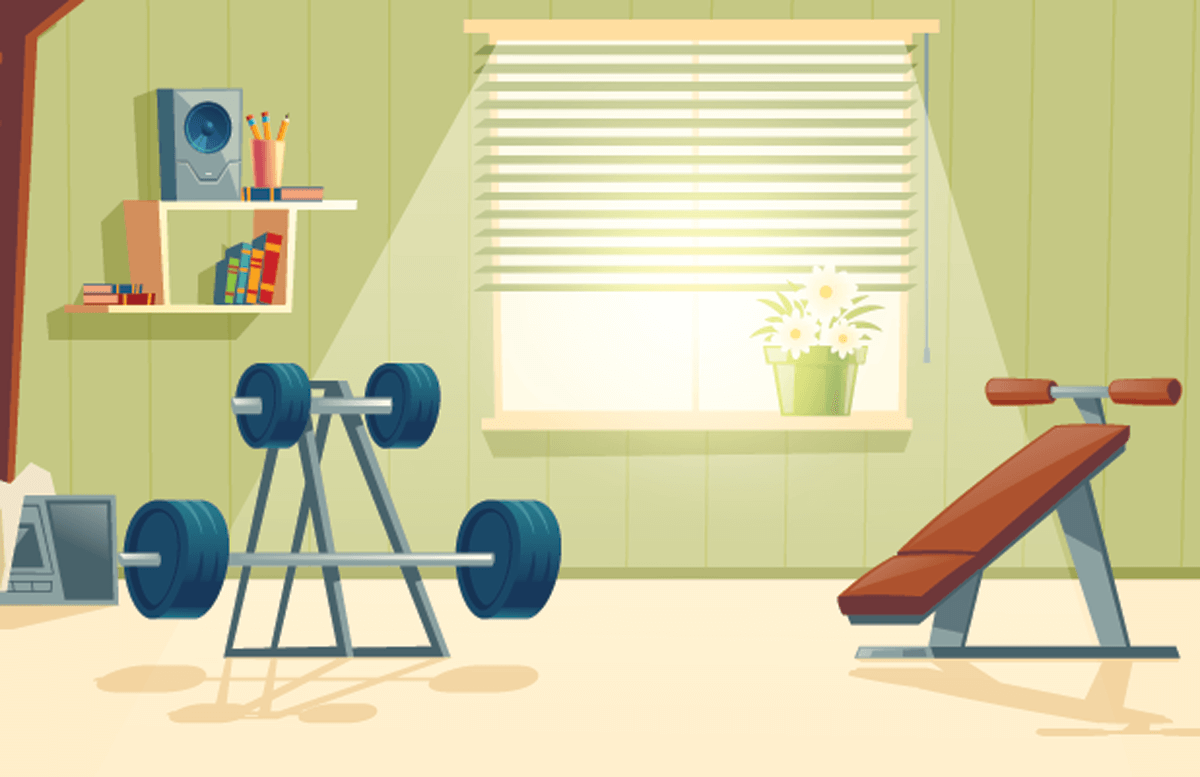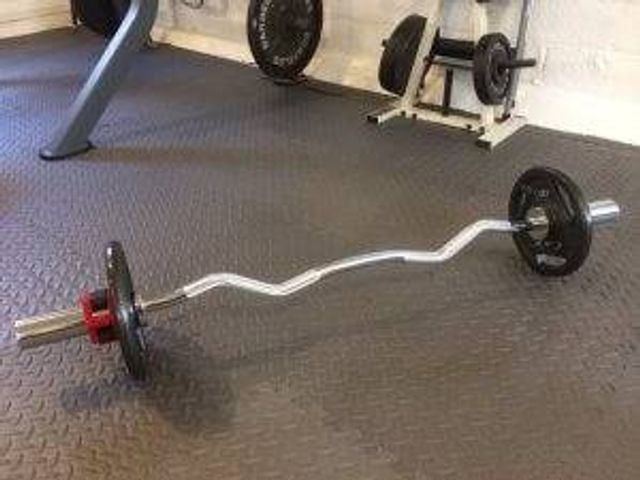Setting Up a Home Gym: What Should You Buy?
Your budget, space and fitness goals are just a few things to consider
There are a lot of great reasons to set up a home gym. Maybe you’re tired of schlepping to the local fitness center or maybe you hate wasting time waiting for people to get off the exercise machines you want to use. Maybe you prefer to grunt, groan and sweat in the privacy of your own home.

Whatever the reason, if you’re ready to set up a home gym but don’t know where to start, read on to learn how to create one that works well for you.
Just be sure to buy equipment you'll actually use so you don't end up with a $1,200 clothes rack.
Primary Home Gym Considerations
When planning your home gym, there are four essential questions to answer before you spend that first dollar on equipment.
- What are your fitness goals? The most important question here is: What do you want to accomplish with your home gym? Are you training for a triathlon, hoping to improve your golf game or looking to boost overall health and fitness? You should also consider others in your home who will use the gym. Do they have similar or different goals?
- What type of exercises do you enjoy? That will help you decide on the equipment you’re most likely to use day after day. Because, no matter how effective something might be, the only way it can help you reach your goals is if you actually use it.
- How much space do you have? Now that you have some idea of what you may want to buy, look up the dimensions for all possible equipment and consider if and how it will fit in the space you plan to use. You can even use painter’s tape to mark out the location for each piece of equipment. Don’t forget to consider overhead clearance, especially if your space is in the basement.
- What’s your budget? Set a reasonable budget for your home gym, based on the factors above. You can set up a great home gym for about what you’d pay for a full-year membership at a fitness center, but it’s possible to build a bare-bones setup that gets the job done for much less. And don’t dismiss what you already have! You can spend hundreds of dollars on a shiny new cardio machine, but 30 minutes walking up and down the stairs will give you just as good a workout. Likewise, if you can’t do 15 pushups, you don’t need a bench press setup yet.
What Equipment Is Best for You?
When you’re ready to buy your home gym gear, take some time to research the features and quality of different brands of equipment. Remember, there’s no substitute for actually trying something out before buying it.

If you have a gym membership, note the brand and model of your favorite machines, weights and other equipment. You can also try out your friends’ home gym equipment or go to a sporting goods store and try out their test models.
If a pre-purchase test run isn’t possible, then read as many online product reviews as you can find. Pay attention to the dates of those reviews because product quality and manufacturing processes can change significantly over time.
Home Gym Bargain Hunting 101
One of the most important things in setting up your home gym is knowing when it’s OK to bargain hunt, and when quality should be your top priority.
When durability (as in the case of cardio machines) and safety (as in the case of weight machines, pull-up bars and squat racks) are factors, choose quality over price. That doesn’t mean you have to buy new, though.
It’s possible to get gently used, top-quality equipment for a fraction of the cost if you’re willing to be patient and diligently check sites like Craigslist, Facebook Marketplace and the local classifieds.
Just be sure the items you buy secondhand are in working, safe condition before you get them home. Never buy a piece of equipment that’s been disassembled or that you can’t try before buying.
The best opportunity to save money on your home gym is with weight. After all, 10 pounds weighs 10 pounds whether it’s shiny and new or starting to rust. Always buy weights and medicine balls secondhand if you can.
When it comes to “soft” equipment like mats, resistance bands and stability balls, you should buy new. But it’s not necessary to choose brand-name products. The less expensive, no-name brands likely will be built very similarly. Let customer reviews be your guide.
Three Sample Home Gyms
Basic strength training setup: $50 to $500: If you’re willing to do your aerobic exercise outdoors or use bodyweight exercises, you can set up a strength-only gym quite cheaply. A great set of resistance bands (loops and longer bands with handles) can be purchased for under $100. If you need more weight, opting for an EZ Curl bar (a shorter, wavy barbell) with a variety of plate weights is a great, low-cost option. And adjustable weight dumbbells save a ton of space and money over individual dumbbells.
Cardio and strength setup: $800 to $1500: If you want at least one indoor cardio machine, a reliable, mid-range model will add $300 to $800 to your gym cost. To upgrade the basic strength training setup described above, you can add an adjustable bench and more weights and bars for another $100 to $200.
High-end cardio and strength setup: $2,000 to sky’s the limit: If you want to make your home gym the best room in your home, plan to spend a few thousand dollars or more. Decent “total-gym” cable machines start at around $1,500 and they allow you to do many different strengthening exercises.
You can get more weight for the cost by opting for a high-end squat rack (around $500) and a barbell and plate weight set ($200 to $500). If you’re in the market for high-end cardio machines, those can range from $800 to over $2,000 each.
You could add a TV and audio system — at a wide range of cost — and turn your home gym into something your friends will want to use, too!
Whatever your budget, setting up a home gym is a great way to save time, boost exercise adherence and save money over the long run. Just be sure to buy equipment you’ll actually use, so you don’t end up with a $1,200 clothes rack.


